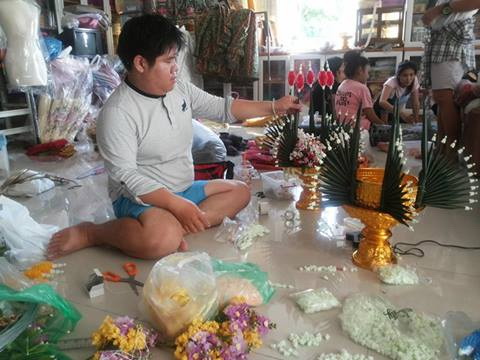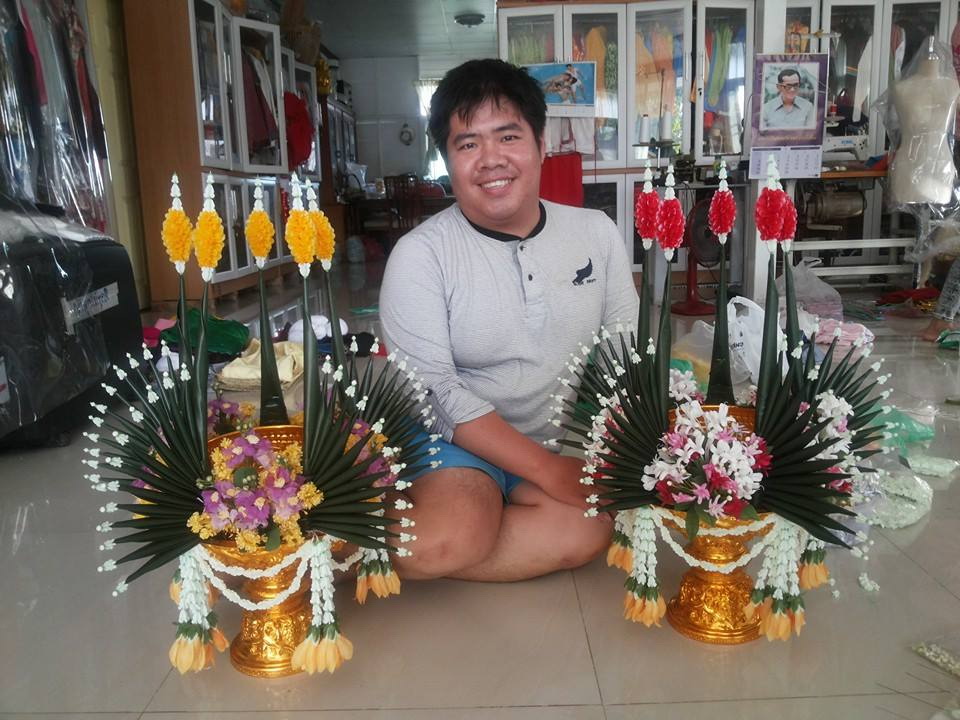|
On a list of the things we can’t do without, most people in the developed and enlightened West would not even mention an item that tops the list here in the East. I don’t mean by that that if you conducted a survey you’d find this mentioned most often. But if you studied what people did at the major intersections of their lives around here “calling for kwan” would come up very often. And if you ask anyone “What happens if your kwan leaves you?” they look at you suspiciously, shudder and say, “You die!” The very topic is taboo.
In the two dictionaries I depend on most, kwan is defined with long lists of options. They include such things as fortune, luck, auspiciousness, spirit, prosperity and charm. Yet it is one word. That means that it is all these various things in a single concept. I think we do not have an equivalent in English. That’s why it takes so many words to define it. My clue, however comes from Dr. George Bradley McFarland who spent decades collecting data for the first modern Thai-English dictionary. McFarland describes a rite of passage, now rare, in which a boy’s tonsure was cut. In the ceremony, an egg is provided for “the propitiation of the ‘Khuan’ ... of the tonsured. This surmounts the conical structures in the confirmation tonsorial ceremony and no doubt symbolizes the vital principle, and represents the idea of rebirth. As the candidate eats this [egg] it is evident the act signifies that the Khuan is reborn in his body and that he has entered upon a new life of prosperity, happiness and composure.” (p. 145) In another note McFarland writes about phuk kwan which involves placing “cords or threads strung with charms around the neck, wrists or ankles of infants or of the sick” which is intended “to ward off the power of evil spirits or to insure protection to the individual through propitiatory incantations or magical formulas and offerings.” These days, 70 years after McFarland got out of the Japanese concentration camp and finished his dictionary, the use of white cotton strings to communicate blessings and good wishes is very common, but amulets or charms are no longer usually added. Still later in his explanation, McFarland mentions that these rites “call back the protecting spirit.” I believe what French philosopher Henri Bergson called elan vital is fairly close to kwan. He said, “If there is finality in the world of life, it encompasses the whole of life in one indivisible embrace.” Bergson’s detractors translated elan vital as “life force” and sought to ridicule it as no more meaningful than “locomotive force” would be to describe how a locomotive on a train works. But they oversimplified Bergson’s complex concept, just as picking one of the many terms for kwan would deny the others. In any case, here in Northern Thailand a BAI SRI flower arrangement is one of the iconic symbols of important ceremonies. In the pictures accompanying this essay, our friend and neighbor, Prawit Rincome, is constructing a bai sri flower arrangement. These floral displays are more than decoration. They have a central role in marriage, supchataa [life extension], and ordination ceremonies. Their purpose, Prawit says, is to “call for kwan”. There are two basic types of bai sri arrangement. One is used with people, as part of the three human events mentioned. This type is built on 4 legs, or sprouts made of folded and plaited banana leaf. Each sprout traditionally had 9 points sticking out. The term for those points literally means “teats of a cat”. That gives this type its name, bai sri nom maew [cat teat bai sri]. The florist usually puts a white blossom or bud on each point. The whole arrangement involves taking buckets of flowers apart and re-assembling them. The other arrangement is similar but smaller and placed on a pedestal tray, used for inaugurating a spirit shrine. It is called bai sri thep [angel’s bai sri]. Here in the North a tradition is maintained that originated when His Majesty King Rama VI visited Chiang Mai in the second decade of the last century. This arrangement has 5 sprouts, rather than 4. At the tips a tuft of flowers indicates the royal person being honored. Yellow is the present King’s color, since he was born on Monday. The arrangements that Prawit is showing have not yet been completed with the symbolic rice and items that will fill the bowl. Bai sri flower arrangements are not prepared for funerals because the time for “calling for kwan” is over.
0 Comments
Leave a Reply. |
AuthorRev. Dr. Kenneth Dobson posts his weekly reflections on this blog. Archives
March 2024
Categories |
| Ken Dobson's Queer Ruminations from Thailand |
|


 RSS Feed
RSS Feed
